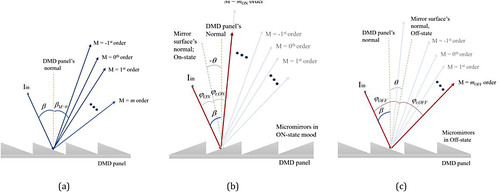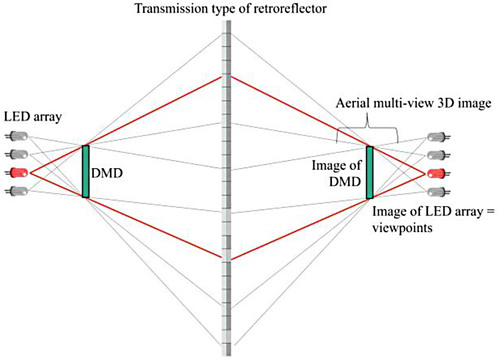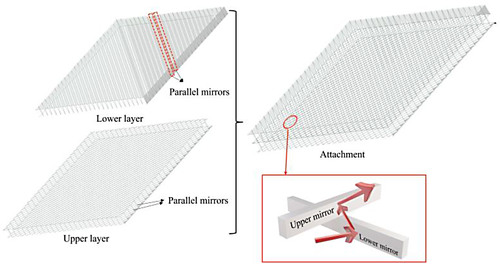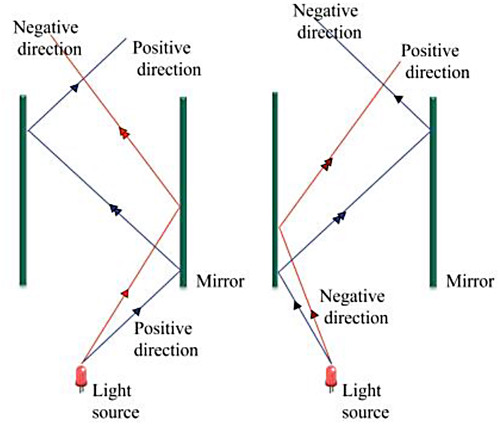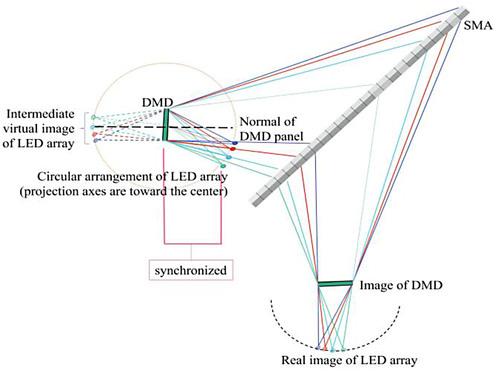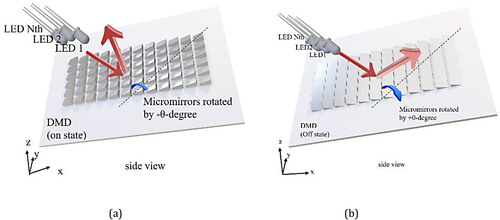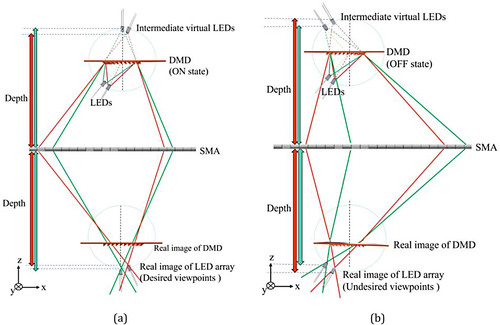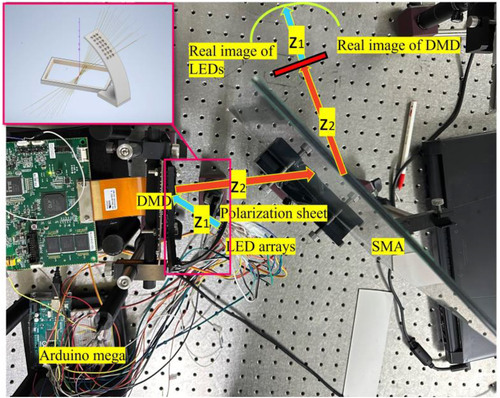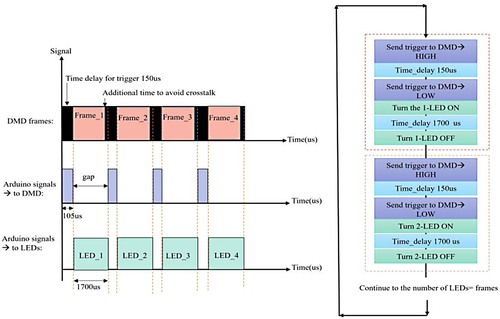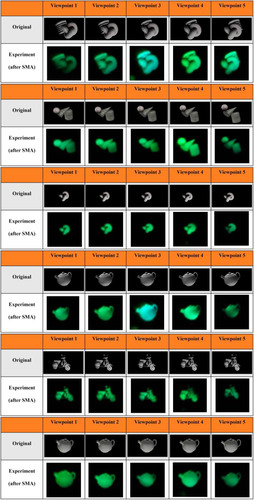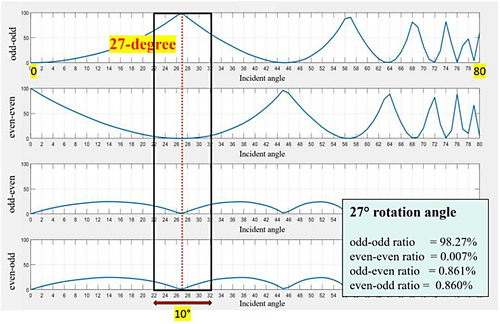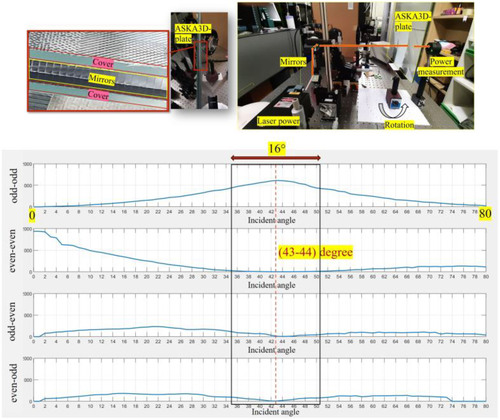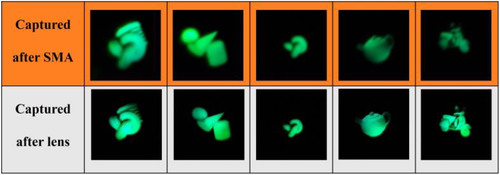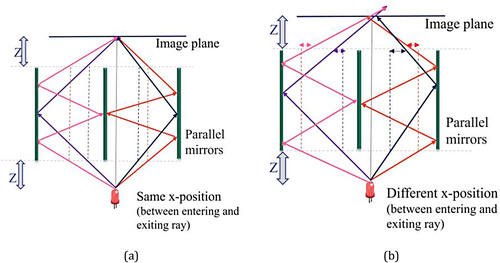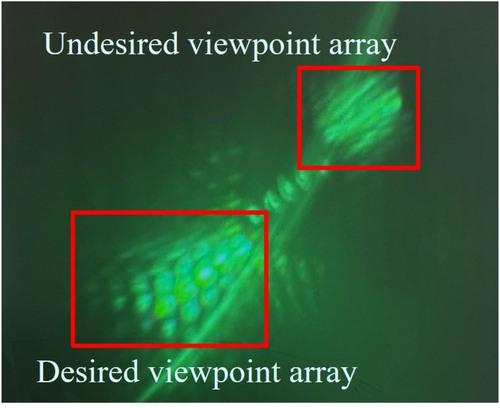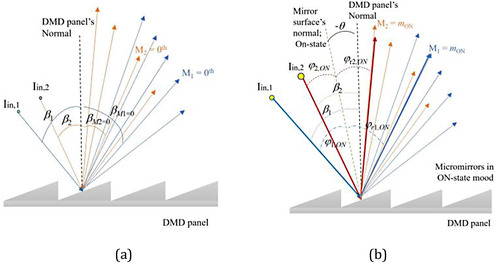Figures & data
Figure 2. Comparison of image formation between the lens and transmission type retroreflector. (a) Image after the lens. (b) Image after the transmission type retroreflector.

Figure 5. Ray tracing simulation of SMA. (a) 2D simulation of one mirror layer. (b) 3D simulation of both mirror layers.
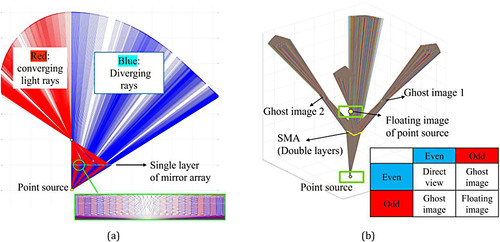
Figure 7. Intermediate virtual image of an LED formed by a single pixel mirror of DMD. (a) ON state mirror. (b) OFF state mirror. (c) Angular difference between ON and OFF state pixel mirror images.
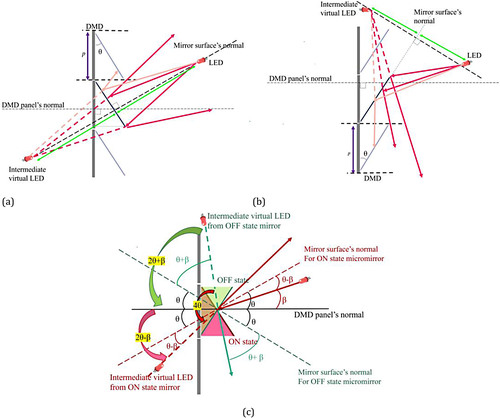
Figure 8. Calculation of the intermediate virtual LEDs’ position to determine the amount of blurriness. (a) ON state. (b) OFF state.
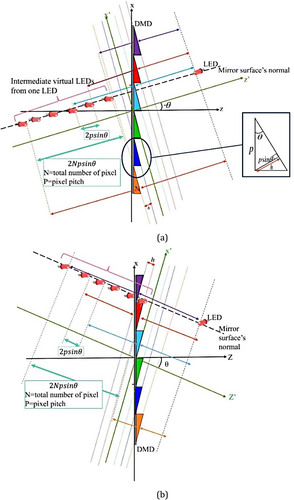
Figure 13. Experimental results. (a) Image of the DMD panel. (b) Desired and undesired viewpoint array with a faint image of the LED array in between. (c) The angular separation of desired and undesired viewpoint from a single LED.
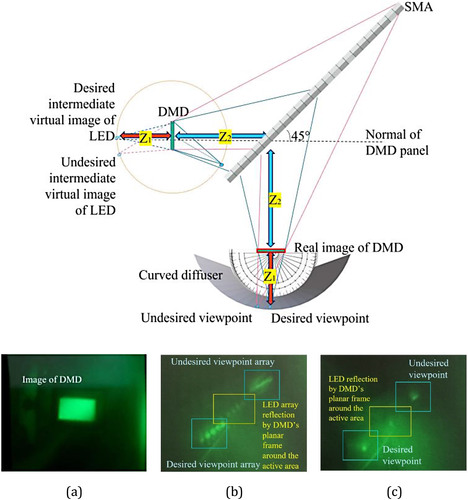
Figure 20. (a) Diffraction orders of the DMD. The strongest diffraction order in (b) ON state and (c) OFF state.
